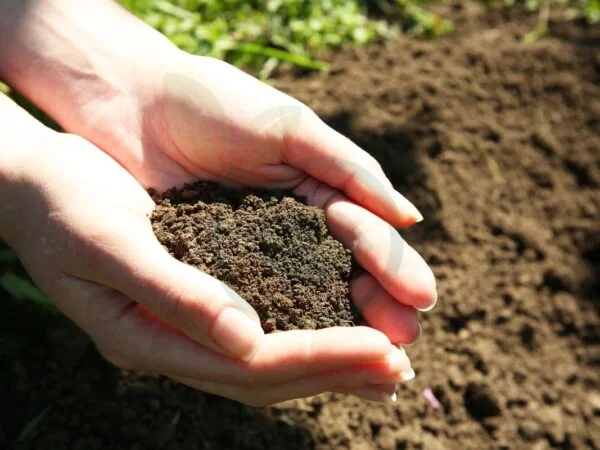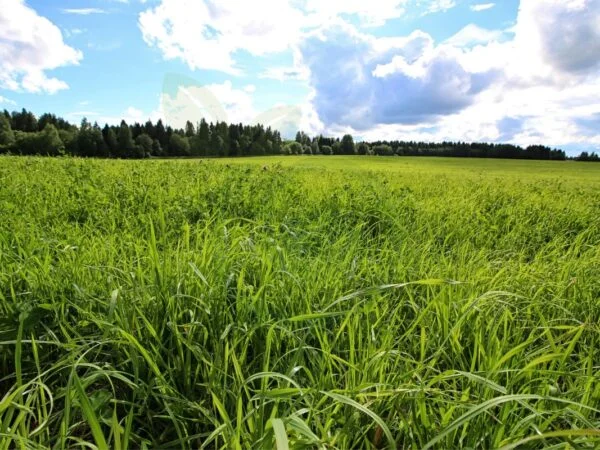Curious if your furry friend can stroll on freshly seeded grass? While it's best to keep pets off newly planted areas to avoid disturbance, there are ways to manage this dilemma. Understanding the timing and precautions can help balance a lush lawn and your pet's playtime. By grasping the necessary steps, you can create a pet-friendly environment without compromising your green space. Discover how to navigate this common conundrum for a harmonious backyard that satisfies both your canine companion and your landscaping aspirations.
Key Takeaways
- Recognize Signs Early: Be vigilant in identifying any signs of discomfort or issues in your dog after potential exposure to grass seeds.
- Introduce Safely: When allowing your dog to walk on grass seed areas, start with short supervised sessions to monitor their well-being.
- Preventive Measures: Implement protective strategies like using dog booties or avoiding high-risk areas to minimize the chances of grass seed-related problems.
- Prompt Action: If you suspect your dog has come into contact with grass seeds, seek veterinary guidance promptly to prevent complications.
- Recovery Support: Follow recovery guidance from your veterinarian diligently to ensure your dog's timely and effective healing.
- Prioritize Well-being: Your dog's health and safety should always be a top priority when dealing with potential grass seed risks.
Grass Seed Risks
Paw Injuries
Inspect your dog's paws regularly for grass seeds. Keep the hair around their paws short to minimize potential damage. Look for signs like limping or excessive licking between toes.
Eye Irritations
Check your dog's eyes for redness, swelling, or discharge post walks. Seek immediate vet attention if you suspect a grass seed in their eye. Understand the discomfort caused by grass seeds and the need for prompt treatment.
Ear Complications
Monitor your dog for signs of pawing at ears or shaking head vigorously. Grass seeds can easily get lodged in their ears during outdoor activities. Consult a vet if unusual behavior related to ear discomfort is noticed.
Overall Health
Grass seeds from the lawn pose risks to your dog's overall health if not promptly addressed. Regularly groom them to prevent injuries from grass seeds and prioritize their well-being by being proactive in protection.
Recognizing Problems
Identifying Seeds
Learn to identify grass seeds on your dog's body, especially after outdoor activities. Check different parts thoroughly. Be vigilant for signs of grass seed attachment like sudden sneezing or constant paw licking post-outdoor play on the lawn. Understand the appearance and common locations where grass seeds tend to attach to your furry companion.
Symptoms Check
Observe symptoms such as sudden sneezing or excessive paw licking, indicating potential grass seed issues. Recognize signs like limping, shaking head frequently, or swelling that suggest a grass seed injury. Understanding these symptoms promptly can help you address any potential problems effectively.
Treatment Options
Know when it's crucial to seek professional help for removing embedded grass seeds from your dog's skin. Early treatment is vital to prevent complications arising from untreated grass seed injuries. Familiarize yourself with various treatment methods available for managing and treating injuries caused by grass seeds.
Protective Strategies
Designated Areas
- Choose designated areas with shorter grass for safer playtime with your dog.
- Avoid letting your dog roam freely in areas with long grass where seeds are common.
- Designating safe play zones can significantly reduce the risk of grass seed-related injuries.
Protective Gear
- Consider using protective gear like booties or paw wax to shield your dog's paws from grass seeds.
- These items provide a physical barrier, preventing seeds from getting lodged between their toes.
Activity Monitoring
- Keep a close eye on your dog during outdoor activities to prevent them from stepping on grass seeds.
- Regularly check their fur and paws after walks to remove any embedded seeds promptly.
Safe Introduction
Waiting Period
After sowing grass seed, it's crucial to allow for a waiting period of at least two to three weeks. During this time, avoid letting your dog walk on the freshly seeded areas.
To ensure successful grass growth, restrict your dog's access to these sections until the new grass is well-established and sturdy enough to withstand paw traffic.
Precaution Measures
Implement measures such as creating temporary barriers or using pet-friendly fencing to prevent your dog from reaching the newly seeded areas.
Consider scheduling regular walks in alternative locations away from the seeded spots to minimize any potential damage.
Preventing Exposure
Outdoor Safety
Dogs should be kept away from areas with grass seed to minimize the risk of exposure.
Always supervise your dog when they are outdoors, especially in grassy areas where seeds may be present.
Consider using a leash to control your dog's movements and prevent them from wandering into potentially hazardous areas.
Gear Utilization
Invest in protective gear such as booties for your dog's paws to shield them from grass seeds.
Regularly check your dog's fur and paws for any signs of grass seeds after outdoor walks.
Brush your dog's coat thoroughly to remove any lodged seeds that could cause discomfort or health issues.
Area Monitoring
Inspect your backyard regularly for any signs of grass seed infestation, and take steps to eliminate them promptly.
Create designated play areas for your dog that are free from grass seeds, ensuring a safe environment for exercise and playtime.
Consider using pet-friendly lawn treatments to reduce the presence of grass seeds in your yard.
Recovery Guidance
Post-Surgery Care
After the surgery, monitor your dog closely for any signs of discomfort or complications. Keep the incision site clean and dry to prevent infections. Ensure your furry friend gets plenty of rest to aid in their recovery process.
Provide pain medication as prescribed by the veterinarian to help manage any post-operative pain your dog may experience. Limit their physical activity during the recovery period to prevent any strain on the surgical site.
Health Monitoring
Regularly check your dog's vital signs such as temperature, heart rate, and breathing patterns. Any sudden changes could indicate an underlying health issue that needs immediate attention.
Observe their behavior closely for any unusual symptoms like lethargy, loss of appetite, or excessive panting. These could be signs of complications that require prompt veterinary care.
Understanding Impact
Seed Dangers
Grass seeds can pose risks to dogs when stepped on, as they may embed in their paws. This can lead to infections and discomfort for the furry companions. The sharp edges of grass seeds can cause painful injuries if not promptly removed from a dog's paw.
If ingested, grass seeds might cause digestive issues for dogs. These tiny seeds can get lodged in the throat or digestive tract, leading to choking hazards or intestinal blockages. It's crucial to prevent dogs from consuming grass seeds to avoid such health complications.
Health Effects
Walking on grass seed-covered areas can expose dogs to various health problems, such as skin irritation and allergies. Grass seeds have small barbs that can attach to a dog's fur, causing skin redness and itching. Dogs with sensitive skin may experience more severe allergic reactions.
Moreover, inhalation of grass seed particles while walking on seeded areas can result in respiratory issues for dogs. Breathing in these particles may lead to coughing, sneezing, and respiratory distress. It is essential to monitor your dog after walks on seeded grass areas for any signs of breathing difficulties.
Practical Tips
Safe Play Zones
Creating designated play areas for your dog can prevent them from walking on grass seed:
- Use barriers like fences or playpens to keep your dog away from freshly seeded areas.
- Opt for dog-friendly ground coverings like mulch or gravel in areas where grass seed is planted.
Designating safe play zones ensures your furry friend avoids potential harm from ingesting or stepping on grass seeds.
Gear Recommendations
Consider using protective gear to safeguard your dog from grass seeds while outdoors:
- Invest in durable booties to shield their paws during walks in areas with freshly sown seeds.
- Utilize a comfortable and secure harness to prevent them from wandering into seeded regions.
Equipping your pet with appropriate gear enhances their safety and minimizes the risk of encountering grass seeds.
Ensuring Well-being
Regular Checks
Regularly inspect your dog's paws for any signs of irritation or injury after walking on grass seed. Ensure to clean their paws thoroughly to remove any lodged seeds that might cause discomfort. If you notice any redness or swelling, consult a vet immediately for proper treatment.
Professional Advice
Seek guidance from a veterinarian if you are unsure about the safety of walking your dog on grass seed. Veterinarians can provide insights on how to prevent potential issues and offer suitable alternatives. They can recommend specific products like paw balms to protect your dog's paws while walking on grass seed.
Closing Thoughts
In conclusion, being aware of the risks associated with grass seeds and understanding how to protect your furry friend is crucial. By recognizing potential problems, implementing protective strategies, and following safe introduction practices, you can ensure your dog's well-being. Remember to take preventive measures and seek recovery guidance if needed to minimize the impact on your pet's health. With practical tips and a deeper understanding of the issue, you can create a safe environment for your canine companion.
Protect your dog by staying informed and proactive in safeguarding them from grass seed-related dangers. Your pet's health is in your hands, so take the necessary steps to keep them safe and happy. Stay vigilant, follow the guidelines provided, and always prioritize your furry friend's safety above all else.
Frequently Asked Questions
Can grass seed be harmful to dogs?
Yes, certain grass seeds can pose risks to dogs if ingested or become lodged in their paws, ears, or eyes. It's essential to recognize potential problems and take preventive measures.
How can I protect my dog from grass seed-related issues?
To safeguard your dog, consider using protective strategies such as keeping your lawn well-maintained, grooming your pet regularly, and being cautious during walks in areas with grass seeds.
Is it safe for dogs to walk on grass seed-covered areas?
While some dogs may not have any issues walking on grass seeds, it's advisable to introduce them gradually to such environments and inspect their fur and paws afterward for any signs of irritation or discomfort.
What should I do if my dog encounters grass seeds?
If your dog comes into contact with grass seeds, follow recovery guidance by carefully removing any visible seeds from its coat or skin and monitoring for symptoms like excessive scratching or redness.
How can I ensure the well-being of my dog around grass seeds?
Ensure your dog's well-being by understanding the impact of different types of grass seeds on pets, implementing practical tips like regular grooming and avoiding high-risk areas where these seeds are prevalent.
Image Source: Paid image from CANVA



